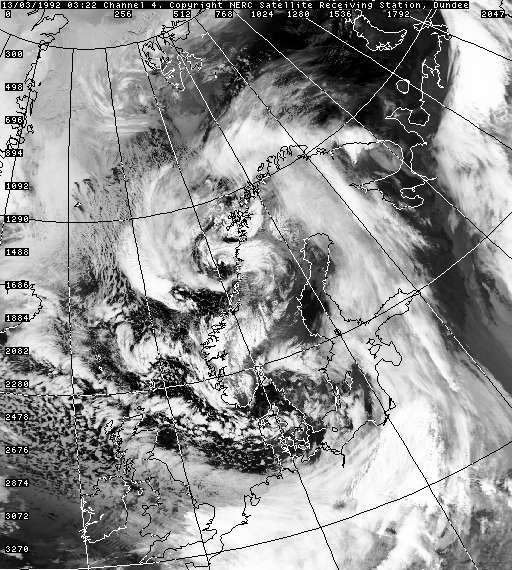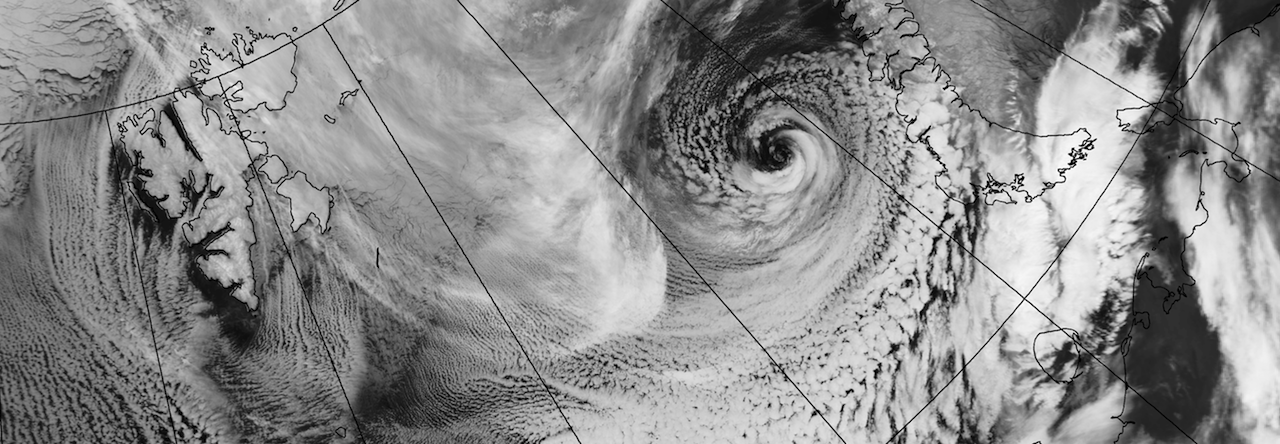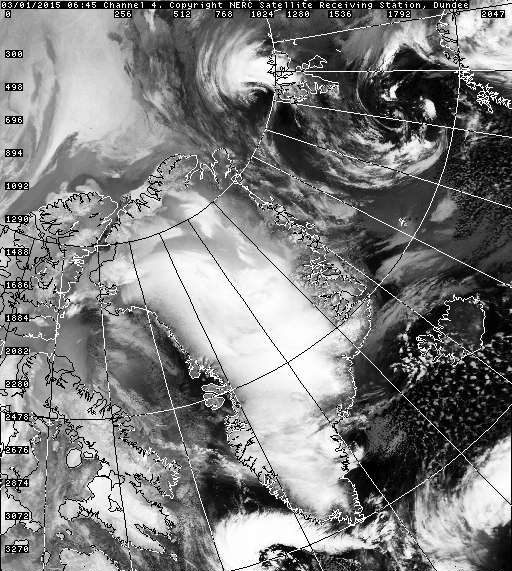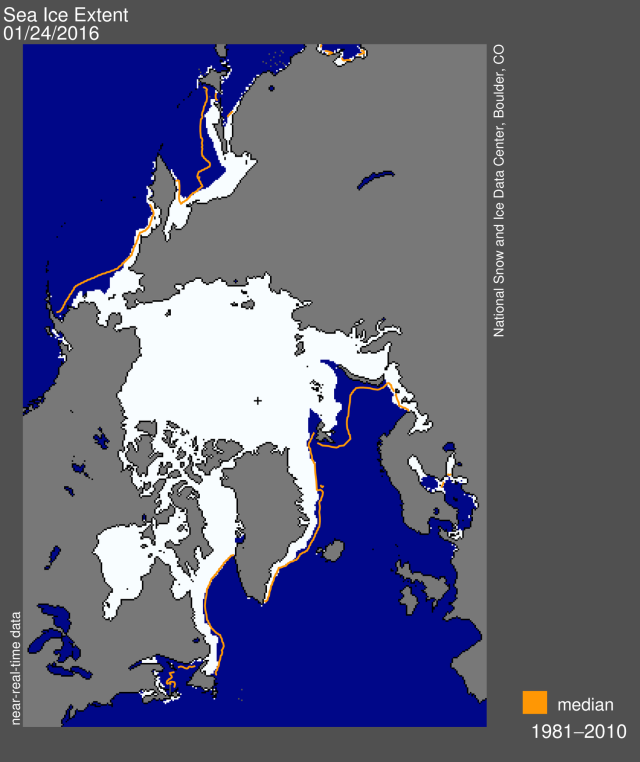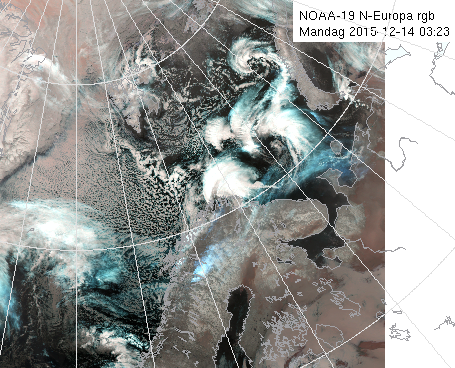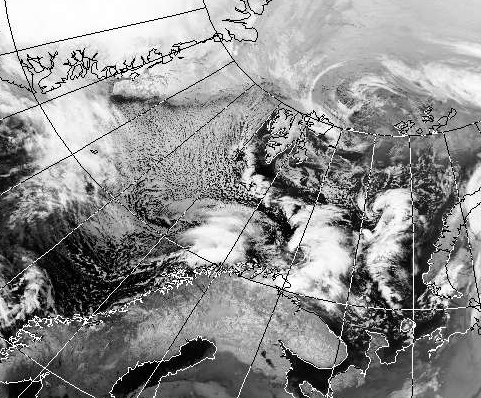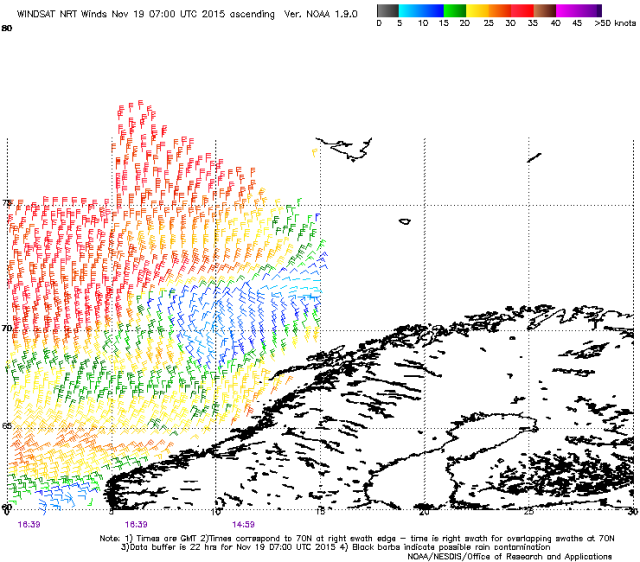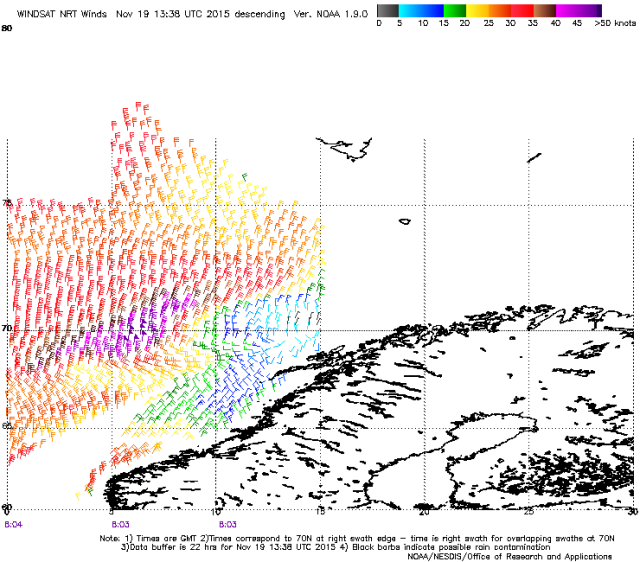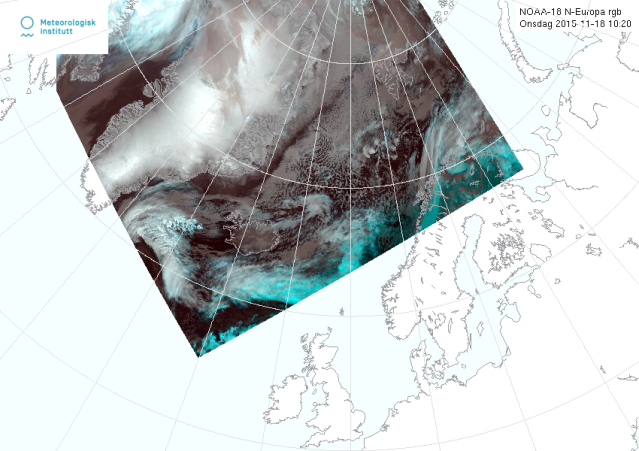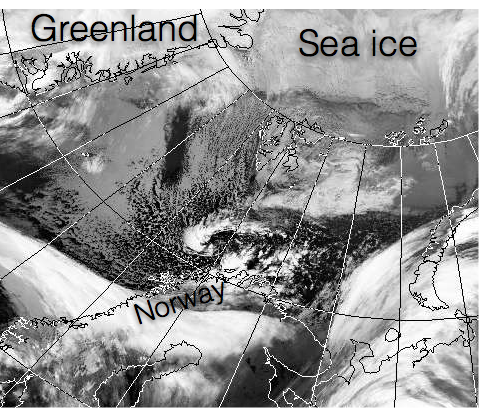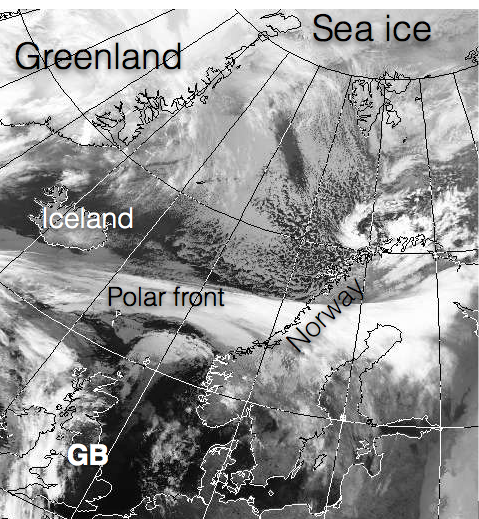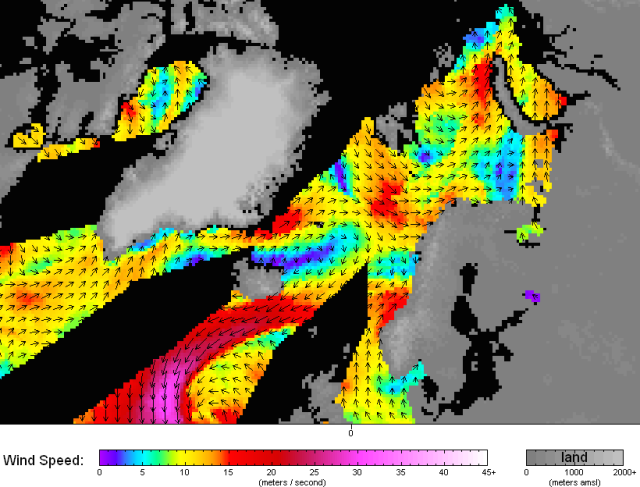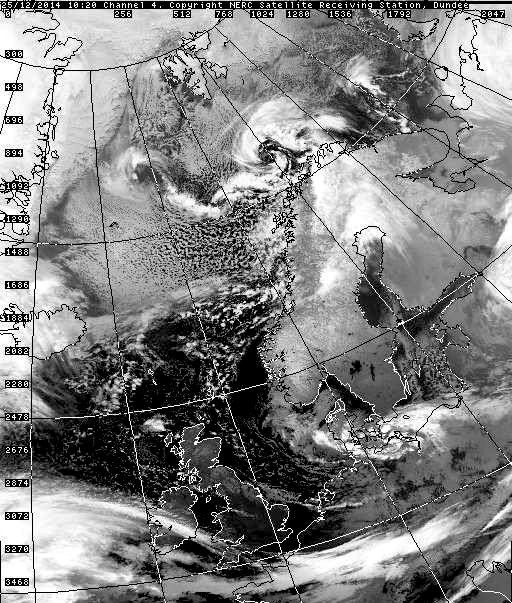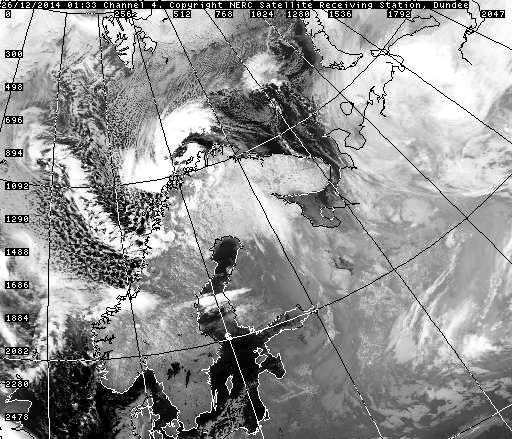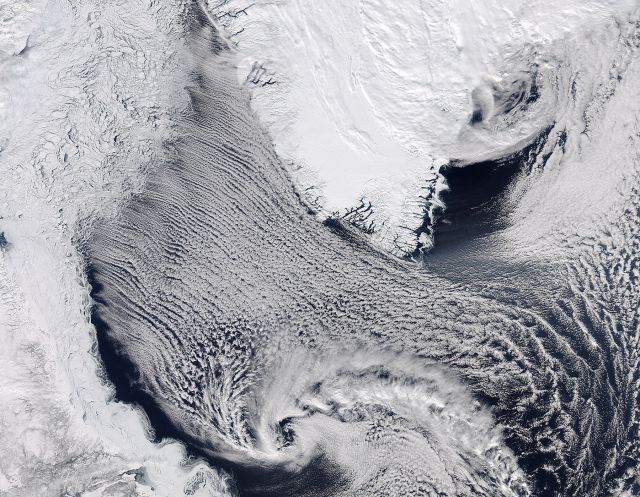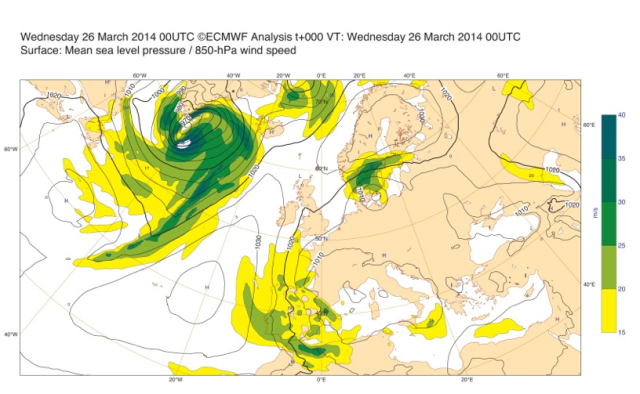This picture was taken just before noon on Friday 6 December 2013 (courtesy of the Dundee Satellite Receiving Station):
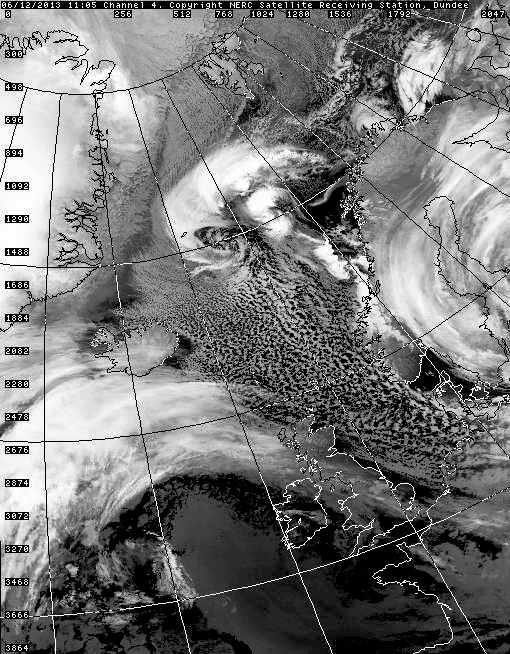
There is little reason to doubt that that’s a polar low up at 70 degrees north. It moves towards the south inside a cold air outbreak that covers much of the North Atlantic north of the British Isles.
There have been strong winds here in Bergen (at 60N on the west coast of Norway) ever since yesterday, when a strong low moved in from the west. The cold air outbreak is due to the northerly winds in the wake of that low. Check out the supply ships in the harbour of Bergen earlier today:
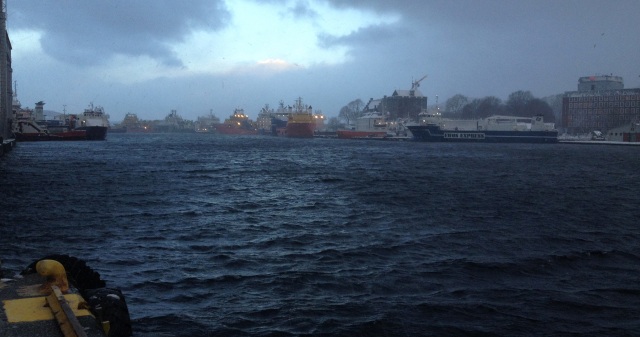
They have nowhere to go right now. The winds are fierce, there is a storm surge, and last night we had about 10 inches of snow. Pretty chaotic, in other words.
As for the polar low heading south, it’s a big one. This is an ECMWF wind speed forecast for later today (2100 GMT):
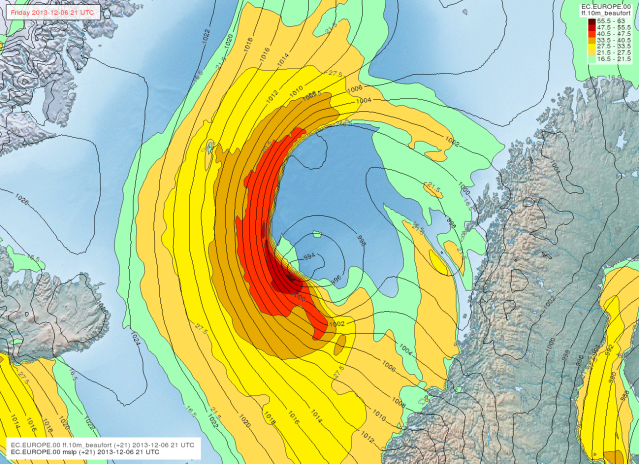
The wind speed is shown with colours in knots. On the Beaufort scale, the lightest one of the two red colours is strong gale and the darkest one is storm. The tiny black speck is violent storm, just one step below hurricane force. Now wonder those ships are staying put in Bergen.
For the weather nerds, note that the air pressure in the polar low is quite high compared to other storms. The strong winds are due to the gradients between the polar low and the ridge over Greenland. In addition, the low is moving southwards, so that adds to the strong southerly winds near the core of the low.
Also note the extreme wind speed gradients. It is all but calm to the north-east of the low. This is another reason that polar lows are dangerous, the insane local variations, from violent storm to nothing in just a few tens of kilometers.
As for the path of the polar low, it looks like it’s going to die before it hits land. By early Saturday morning it will be over.
